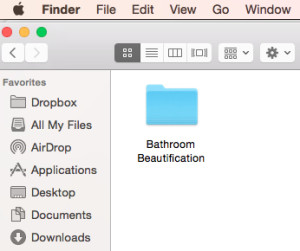Slowing Down #4 – Getting Rid of Clutter
I try to write about rage, and old muck gets in the way.
I’m obsessed with injuries past, dormant for a while, that are suddenly screaming for attention. I can’t get a damn thing done. I assume there’s a reason why they’re clamoring, so I may as well start digging.
Our oven blew up about a week ago. I was cooking a chicken, and I heard a big bang from the kitchen. All the lights went out. Google said that happens a lot with that particular range. Home Depot came a couple of days later with a brand new much-more-fabulous stove and carted off the old one, so I should by rights be done with it. But I am spinning.
Here’s the deal: For nine years, my husband and I have lived in a one-hundred-year-old office building, adapted for residential lofts. Three years ago, a few months after my dad died, I noticed a rotten spot on the baseboard behind our toilet. The place is solid—all concrete, marble, tile—but these baseboards were made of cheap fiberboard—like thick cardboard. Over time, it got wet—I assumed it was water from the shower. It puffed up, fanned out like mille-feuilles pastry. Poking through the softness of the layers, I saw the original black and white Greek-key ceramic tile under the hideous beige twelve-by-twelve, fifty-cents-a-square-foot tile the developer had slapped on top of it.
Marty was on his way to Detroit to visit his mom for five days. Plenty of time, I thought, to pull up the floor, take out the pre-fab tub, the cheap vanity sink, and replace them with vintage fixtures.
A bathroom guru named Joaquin had made magic for a friend. He found him a vintage clawfoot tub, pedestal sink, put in sparkling tile up to the ceiling. That was what I wanted.
As soon as Marty left, Joaquin moved in. He pulled up the offending floor and started to pry the cheap four-by-four white tiles off the walls near the shower. He shouted for me to come look. The drywall was coming down in great chunks with the tiles, soft and crumbling. It was soaked with water through and through. As the opening grew, we could see the plumbing within: copper pipes streaked black, turquoise and white, water dripping down, pooling at the bottom of the wall. The excavation was lined with black mold, teeming with the two-inch water bugs whose ranks had been plaguing us for years.
The source of the leak was at the point where an electric conduit had been placed directly over the hot water main. Electric current, Joaquin explained, corrodes copper, creates pinhole leaks. Water from the main had been slowly dripping behind our walls for years.
I called the building manager, told her we had unearthed black mold. Dangerous stuff. It was an emergency.
It took her more than a week to get the building engineer to our place to inspect the bathroom. By that time, Marty had gotten home and I’d wound up in the emergency room with a fierce bronchitis, as a result of the mold.
Once the engineer finally arrived, he looked directly at the streaming pipes and said the problem was we hadn’t sealed the grout in the shower, and that’s what he told the Board.
I called a plumber, who filed a document telling them it was clearly a construction defect. I have his visit on tape. But by that time, my trust in the Board and the building management and staff had evaporated entirely.
Ultimately, after five weeks of hell, we wound up with a terrific new bathroom, and I filed all the documents and video from the whole mess in a folder labeled “Bathroom Catastrophe” on a hard drive, locked my rage in a box, and full-speed torpedoed ahead.
Until the oven blew up last week and the whole cluster-fuck woke up from where it had been resting, lurking—never sleeping—in my old-brain hippocampus.
* * *
The hippocampus is part of the limbic system. It is responsible for sensation, emotion, and memory. When something happens—when the brain receives a stimulus—it’s the job of the hippocampus to figure out if it’s important or memorable. If it is important, a record of the stimulus gets sent to the left hemispheric cortex (new brain, grey matter) where it gets stored as a story, our understanding of what happened. Understanding or meaning is what transforms what happened into story, so it can take its place in the brain as something that is over, something that happened in the past.
Traumatic experience and things we experience as senseless—like sudden loss of security/home, loss of a loved one, abuse—over-stimulate the hippocampus. When over-stimulated, it [the hippocampus] does not have the capacity to make meaning. It cannot make story. So the data stays in the old right-brain hippocampus as if it is happening in present time. There is no past tense.
And so the bathroom catastrophe was therefore ever-present, lifting weights, getting stronger, bonding with all its brother and sister traumas—abandonment by boyfriends, deaths of loved ones, countless betrayals—in that stubborn ancient-brain hippocampus.
* * *
This Slowing Down series is about writing, clearing the way for writing. And this post is about how stuff comes up that may seem to get in the way, but turns out to maybe be the way.
Bad stuff happens. We humans are made, in great respect, by stuff that has happened. I am made in such a way that bad stuff sticks.
* * *
Clutter is the new gluten. Ha ha. But for some people, like my friend Betsy, getting rid of gluten is not a trend. For her, gluten is poison. A whiff of wheat puts her out of commission for weeks. And for some people, like me, the clutter of unresolved calamity will, once I am triggered, do exactly the same. Until I figure out what the fuck it wants from me.
Marty and I are fixing to declutter. We bought a lightning-quick scanner a year ago, did all our financials, all our receipts, and shredded and tossed many boxes.
What comes next are my dad’s boxes, which include diaries where he analyzed what was going on with my mom, how he was feeling about her being sick, and difficult, and moving towards her end.
There are people who fear that opening boxes can be dangerous because it can potentially re-spark trauma. And it can.
But if our intention is to move through, we do not simply recount. We seek meaning by naming what happened.
* * *
I write about generational violence, and I am stuck. I want to explore what draws us into intractable conflict, personally, and in the realm of nations. But the previously tucked-away agony of the bathroom fiasco—triggered by the blowing up of the oven—screaming from my over-packed hippocampus is an obstacle to my ability to write. I am trying to transform it into story.
Which is what we often do when we write.
So I wonder, what meaning might dwell in the matter of the loo? What is the story?
It could be rampant greed and cutting corners; it could be the financial collapse striking fear and trembling into the Board in tight times; it could be reconciliation in times of dire need: a member of the Board responded to my cry of distress and finished cooking the chicken in his oven.
Or it might be that underlying rot and vermin, sealed into walls (or boxes), will always seep through to the surface.
It’s all there. It just depends on how you look at it.

Renaming the file
Stacie Chaiken is a Los Angeles-based writer-performer. A Fulbright Senior Specialist in the field of Performance and Story, she facilitates What’s the Story? a Los Angeles-based studio for writers and performers who are wrestling with personal story. Her play “The Dig” will premiere at Los Angeles Theatre Center in the spring of 2016. She is currently studying creative nonfiction in the Antioch MFA Creative Writing program.










